This set of Heat Transfer Operations Questions and Answers for Aptitude test focuses on “HT Equipment – Pipe Wall Temperature and Flow in Pipe Profiles”.
1. Velocity profile in a pipe is independent of axial position whereas Temperature Profile is not.
a) True
b) False
View Answer
Explanation: When a fluid flows through a pipe, the wall effect acts on it and eventually after some time the velocity profile gets fully developed, which is independent of axial position and depends only on radial position. Though this is not the case with Temperature profile in a fluid flowing through a constantly heated pipe, it depends on both axial and radial positions.
2. Which is the correct representation of Temperature profile in a fully developed Pipe flow?
a) 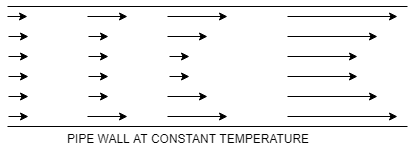
b) 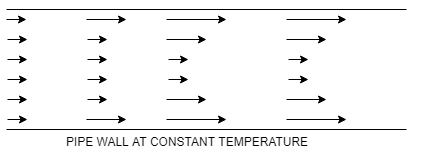
c) 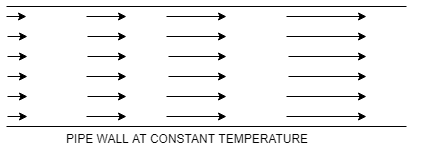
d) 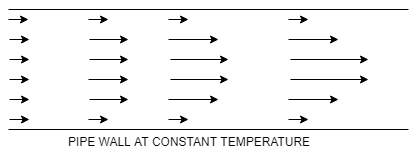
View Answer
Explanation: In a thermally fully developed Pipe flow, the wall has the maximum temperature, which decreases radially to minimum at the centre line. As the fluid flows further the overall temperature of fluid keeps on increasing in symmetry to the flow pattern.
3. What is the Velocity Profile of a hot Liquid flowing through a Pipe?
a) 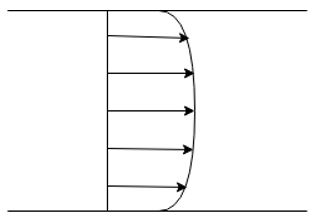
b) 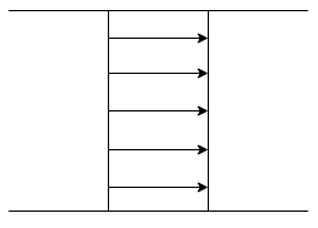
c) 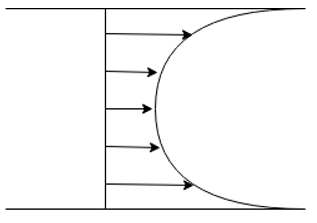
d) 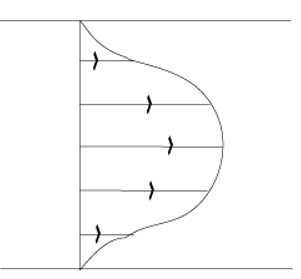
View Answer
Explanation: When a hot fluid flows through a Pipe, it shows a flat velocity profile that of a low viscous fluid, as viscosity decreases with increase in temperature.
4. A liquid is heated by passing it through a circular pipe (kpipe = 15W/mK, viscosity = 2.5×10-5 Pa-s, Cp = 1000 J/Kg-K, kliquid = 0.035 W/mK) of ID = 25mm and OD = 30mm with length L = 15 m. If the Reynolds No. is 79000. What is the outer surface average heat transfer coefficient?
a) 773KW/m2K
b) 83KW/m2K
c) 104KW/m2K
d) 43KW/m2K
View Answer
Explanation: Nusselt number = 0.023×(Re)0.8(Pr)0.4
here Pr = Cpxμ/k, density=1Kg/m3 Hence Pr = 0.7
Nu = h×OD/kpipe = 165, h = 83KW/m2K.
5. What is the Velocity Profile of a hot Gas flowing through a Pipe?
a) 
b) 
c) 
d) 
View Answer
Explanation: When the temperature of a gas is increased, the momentum of the gas molecules increases leading to more collisions between them. This increased collision between the particles acts as a hindrance to their flow, their viscosity increases. This is the reason for low velocity at the wall side.
6. Given a fluid enters at a temperature of 22℃into a pipe of length 1m. On fully developed thermal flow, the wall temperature is 92℃, determine the temperature of the bulk of the liquid at exit. (Given λ = 0.5)
a) 50℃
b) 100℃
c) 104℃
d) 150℃
View Answer
Explanation: The temperature profile for a fully developed thermal flow is,
Tbulk – Twall = (Tinlet – Twall)exp(-λL)
Where we have Tinlet = 22 ℃ and Twall = 92 ℃, putting values we get Tbulk = 50 ℃.
7. The temperature profile of a fully developed Thermal flow in a pipe of length L can be defined by the formula. Tbulk – Twall = (Tinlet – Twall)eλL
a) True
b) False
View Answer
Explanation: The correct formula is Tbulk – Twall = (Tinlet – Twall)e-λL where λ is constant = P.x.hL /m.Cp.
8. Given the convective heat transfer Coefficient of the inner surface to be 15W/m2K, OD = 30mm and ID = 25mm. Find the outer surface heat transfer coefficient.
a) 15 W/m2K
b) 12 W/m2K
c) 12.5 W/m2K
d) 13.5 W/m2K
View Answer
Explanation: The formula for heat transfer coefficients in a thick Pipe is,
hinner ×ID = houter × OD
Hence, houter = 15×25/30 = 12.5W/m2K.
9. A non-conducting liquid is passed inside a metal tube carrying electricity (Voltage=220V, current=0.5A), what is the final temperature of the bulk of liquid if it enters at 10℃. (h =100 W/m2K, Area =0.2m2)
a) 25.5℃
b) 15.0℃
c) 15.5℃
d) 14.5℃
View Answer
Explanation: The heat energy supplied by the metal at unit time = V×I = 220×0.5 = 110J
Hence final temperature, 110 = hA(To-Ti)
To = 110/(100×0.2) + 10 = 15.5 ℃.
10. How can we graphically represent the temperature profile of a fluid flowing through a hot pipe with constant wall temperature?
Tc = Temperature along the axis of the pipe
Tw = Wall temperature
a) 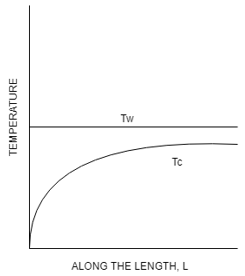
b) 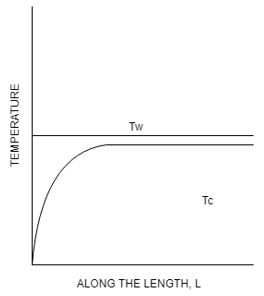
c) 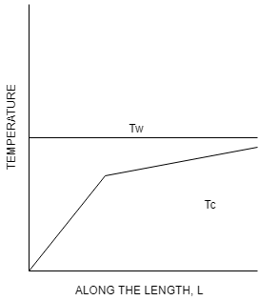
d) 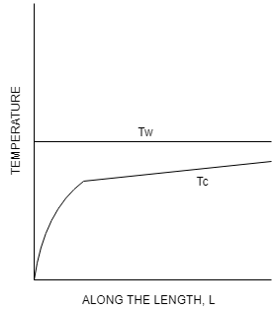
View Answer
Explanation: The temperature of the centre of the fluid flowing gradually increases parabolically to reach a point of fully developed motion, after which temperature increases linearly. The temperature along the axis reaches the wall temperature after a very long time.
11. How can we graphically represent the temperature profile of a fluid flowing through a hot pipe with constant heat flux?
Tc = Temperature of the wall
Tb = Bulk Temperature
a) 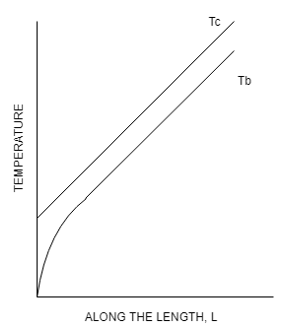
b) 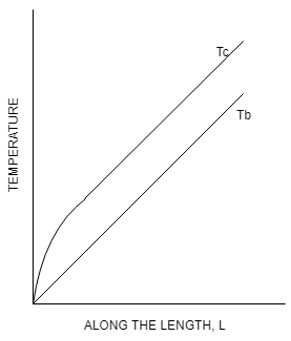
c) 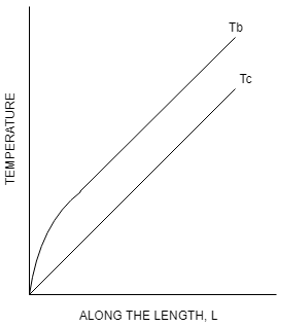
d) 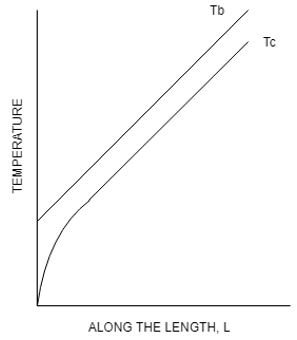
View Answer
Explanation: In the above figures, we have the wall temperature profile and the bulk temperature profile, if we closely understand the heat transfer, the bulk temperature would constantly linearly increase and is less than the temperature at the wall receiving heat flux. The temperature of the wall of the fluid flowing first increases parabolically to reach a point of fully developed motion (heat_in = heat_out) after which temperature increases linearly.
Sanfoundry Global Education & Learning Series – Heat Transfer Operations.
To practice all areas of Heat Transfer Operations for Aptitude test, here is complete set of 1000+ Multiple Choice Questions and Answers.
If you find a mistake in question / option / answer, kindly take a screenshot and email to [email protected]
- Check Chemical Engineering Books
- Practice Chemical Engineering MCQs
- Check Heat Transfer Operations Books
- Apply for Chemical Engineering Internship
